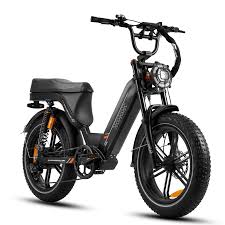Introduction
Electric bikes, commonly known as e-bikes, are a revolutionary advancement in the world of cycling. Combining the mechanics of traditional bicycles with the power of electric motors, e-bikes offer an enhanced riding experience that caters to a wide range of users. From daily commuters to recreational riders, e-bikes provide a convenient, eco-friendly, and efficient mode of transportation. This article delves into what electric bikes are, how they work, and the key features that make them unique.
What is an Electric Bike?
An electric bike is essentially a electric bike equipped with an electric motor that assists with propulsion. This motor can be used to either supplement the rider’s pedaling effort or, in some cases, fully propel the bike without pedaling. E-bikes come in various designs, including road bikes, mountain bikes, and commuter bikes, each tailored to specific riding needs.
Components of an Electric Bike
1. Electric Motor
The heart of an e-bike is its electric motor, which provides the necessary power to assist the rider. There are three primary types of motors used in e-bikes:
- Front Hub Motors: Located in the front wheel, these motors provide a sensation of being pulled forward. They are relatively easy to install and are often found in conversion kits.
- Rear Hub Motors: Positioned in the rear wheel, these motors offer a more natural riding feel, similar to traditional biking. They are popular for their stability and traction, especially on hills.
- Mid-Drive Motors: Located in the middle of the bike, near the pedals, mid-drive motors provide a balanced weight distribution and efficient power transfer. They are favored for their performance on steep inclines and rough terrains.
2. Battery
The battery is the powerhouse of an e-bike, supplying energy to the motor. Most e-bikes use lithium-ion batteries due to their high energy density and long lifespan. The capacity of a battery is measured in watt-hours (Wh), with higher capacity batteries providing longer ranges. The battery is typically mounted on the frame or integrated into it, and it can be recharged using a standard electrical outlet.
3. Controller
The controller is the brain of the e-bike, regulating the flow of power from the battery to the motor. It determines how much assistance the motor provides based on the rider’s input and selected assistance level. The controller can be adjusted through a display unit on the handlebars, allowing riders to choose different modes such as eco, normal, or sport.
4. Pedal Assist and Throttle
E-bikes usually feature either pedal assist or throttle systems, or sometimes both.
- Pedal Assist: This system activates the motor only when the rider is pedaling, providing a boost proportional to the pedaling effort. It allows for a more natural riding experience and is energy-efficient.
- Throttle: This system allows the rider to activate the motor without pedaling, similar to a scooter. It provides immediate power and is useful for quick accelerations or when tackling steep hills.
How Does an Electric Bike Work?
The functionality of an e-bike is a seamless integration of its components. Here’s a step-by-step look at how an e-bike works:
- Starting the Bike: The rider powers on the e-bike using a button or key. The display unit on the handlebars lights up, showing essential information such as battery level, speed, and selected mode.
- Selecting Assistance Level: The rider chooses an assistance level through the display unit. Lower levels provide minimal assistance, preserving battery life, while higher levels offer more power for challenging terrains or faster speeds.
- Pedaling and Motor Activation: As the rider starts pedaling, the pedal-assist sensor detects the motion and signals the controller to activate the motor. The motor then provides the selected level of assistance, making pedaling easier and propelling the bike forward.
- Throttle Operation: If the e-bike is equipped with a throttle, the rider can use it to engage the motor directly, without pedaling. This is particularly useful for starting from a standstill or climbing steep inclines.
- Braking and Stopping: When the rider applies the brakes, the motor assistance is typically cut off, ensuring safe and controlled deceleration. Some e-bikes are equipped with regenerative braking systems that recharge the battery while braking.
Advantages of Electric Bikes
1. Enhanced Mobility
E-bikes make it easier to cover long distances and tackle hilly terrains with less effort. This makes them ideal for daily commuting, recreational rides, and even long-distance touring.
2. Environmental Benefits
E-bikes are an eco-friendly alternative to cars and motorcycles. They produce zero emissions, reducing the rider’s carbon footprint and contributing to cleaner air in urban areas.
3. Health Benefits
While e-bikes provide motor assistance, they still require pedaling, which promotes physical activity and cardiovascular health. They are an excellent option for individuals looking to stay active without overexertion.
4. Cost Savings
E-bikes are more cost-effective than cars in terms of purchase price, fuel costs, and maintenance. They offer a practical and economical solution for urban transportation.
Conclusion
Electric bikes represent a significant leap forward in the evolution of personal transportation. By combining the simplicity of bicycles with the power of electric motors, e-bikes offer an efficient, sustainable, and enjoyable way to travel. Whether for commuting, leisure, or fitness, e-bikes provide a versatile solution that meets the diverse needs of modern riders. As technology continues to advance, the popularity and capabilities of electric bikes are set to grow, making them an integral part of the future of urban mobility.

